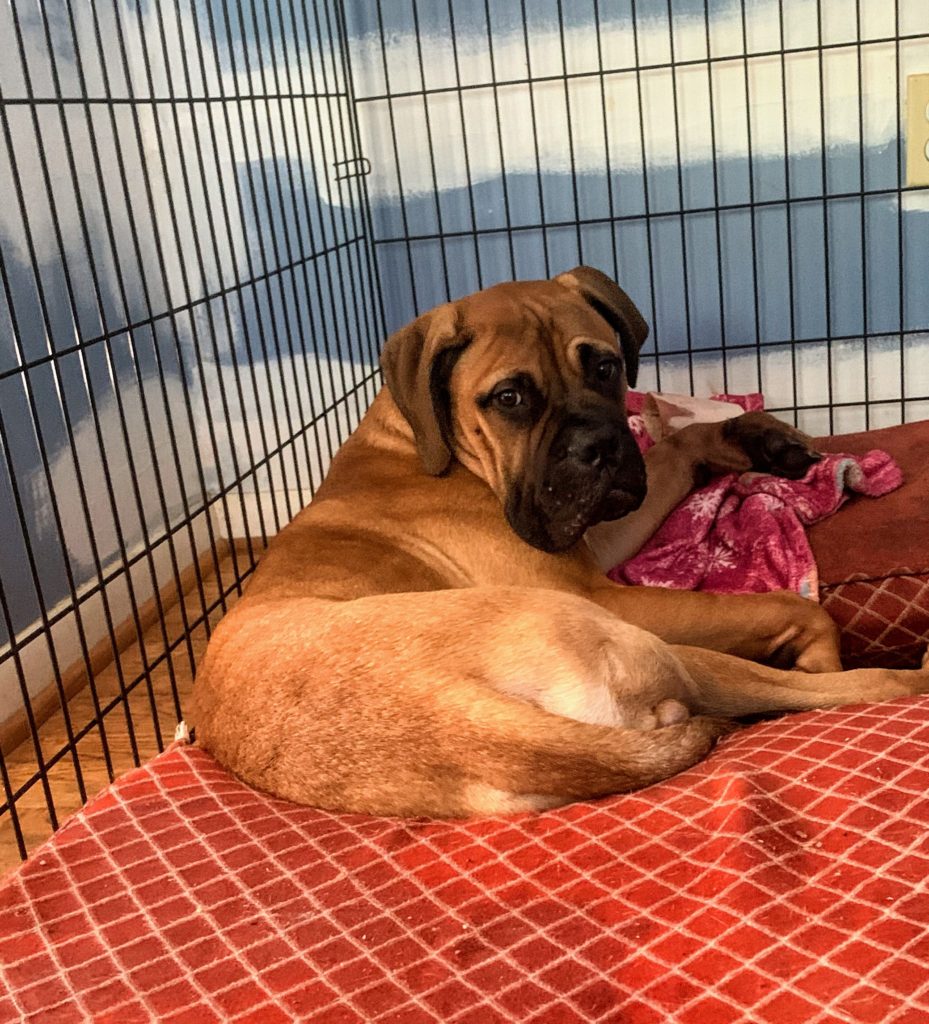A blog about helping your dogs live their best lives
Crate Training for success

This is a list of tips to get your dog crate trained. The most important thing to help you be successful in training your dog to use a crate is PLANNING and MANAGEMENT! Also, don’t expect things to go perfectly.
Make your dog’s crate comfortable for her. Put in a comfy bed or crate pad, a chew bone or toys. Some dogs feel more comfortable feeling enclosed in a safe den, so consider draping a sheet over the top and sides of the crate (leaving the front open.)
Start slow! Don’t just lock your dog in and walk away. At first leave the door open, let her explore. This is a good time to clicker train- click and treat any interaction she offers with the crate. Toss some high value treats inside and praise her for going in to get them. If she goes in by herself, click and treat. If she settles in to chew a bone or take a nap, praise her quietly and leave her to it, leaving the door open.
Give her something to do! A busy dog does not have time to fuss about being in a crate. Giving them a favorite chew bone is great, but especially in the beginning, giving your dog a very high value treat is a great idea. Kong toys or hollow bones stuffed with different mixtures and frozen them and raw marrow bones are great choices. Make sure you only give them to her when she is crated, and it won’t be long before she is racing to get inside when you pull one out.
Closing the door happens gradually. Once she is choosing to go into the crate, you can begin closing the door for a moment. When you open the door again, don’t make a big deal of it- just open the door and walk away, praising her quietly if you like. You don’t want to create any hype around letting her out, otherwise you could create a dog
who gets too excited at the prospect- barking, whining or scratching when it is time to come out. Over time extend the length of time the door is shut.
Pick the right moment to open the door! If your dog begins to whine or fuss when the door closes, wait for five seconds of silence before opening the door. Don’t hover, staring at your dog through the door- this can amp up her anxiety. Stand up, turn around, and walk away. I know it can be frustrating, but honestly- you don’t want your dog thinking that the whining/fussing behavior got you to open that door! If you only ever open the door when they are quiet (and preferably lying down/sitting patiently), then guess what? Your dog will begin offering that behavior to get what she wants! If your dog shows an unreasonable amount of stress/fussing when you close the door, spend time with short sessions where you are rewarding them for being in the crate while you shut the door, click and treat, open the door. Your dog will let you know what she’s comfortable with, and when she is ready, you can move on again.
Feeding time in the crate. Feeding your dog in her crate is a great way to create a positive vibe around being crated. My dogs book it for their crates the first moment they hear me getting out the dinner dishes! Hopefully you have specified meal times for your dog instead of leaving the bowl down all day. (This is n, ot a good idea, but that is another blog post!) If not, this is a good reason to change to specified meal times!
Don’t leave them all day! Crating your dog is great for keeping them safe when you are not able to be there, but remember, your dog is a living creature who needs activity and the opportunity to go out to potty! Once your dog is a pro at being crated, remember that an adult dog should not be crated for more than four hours at a time without a play/potty break. Puppies need to get out more often- if you have a puppy, using a crate to house train is a wonderful idea, even if you don’t plan on crating them once they are grown.